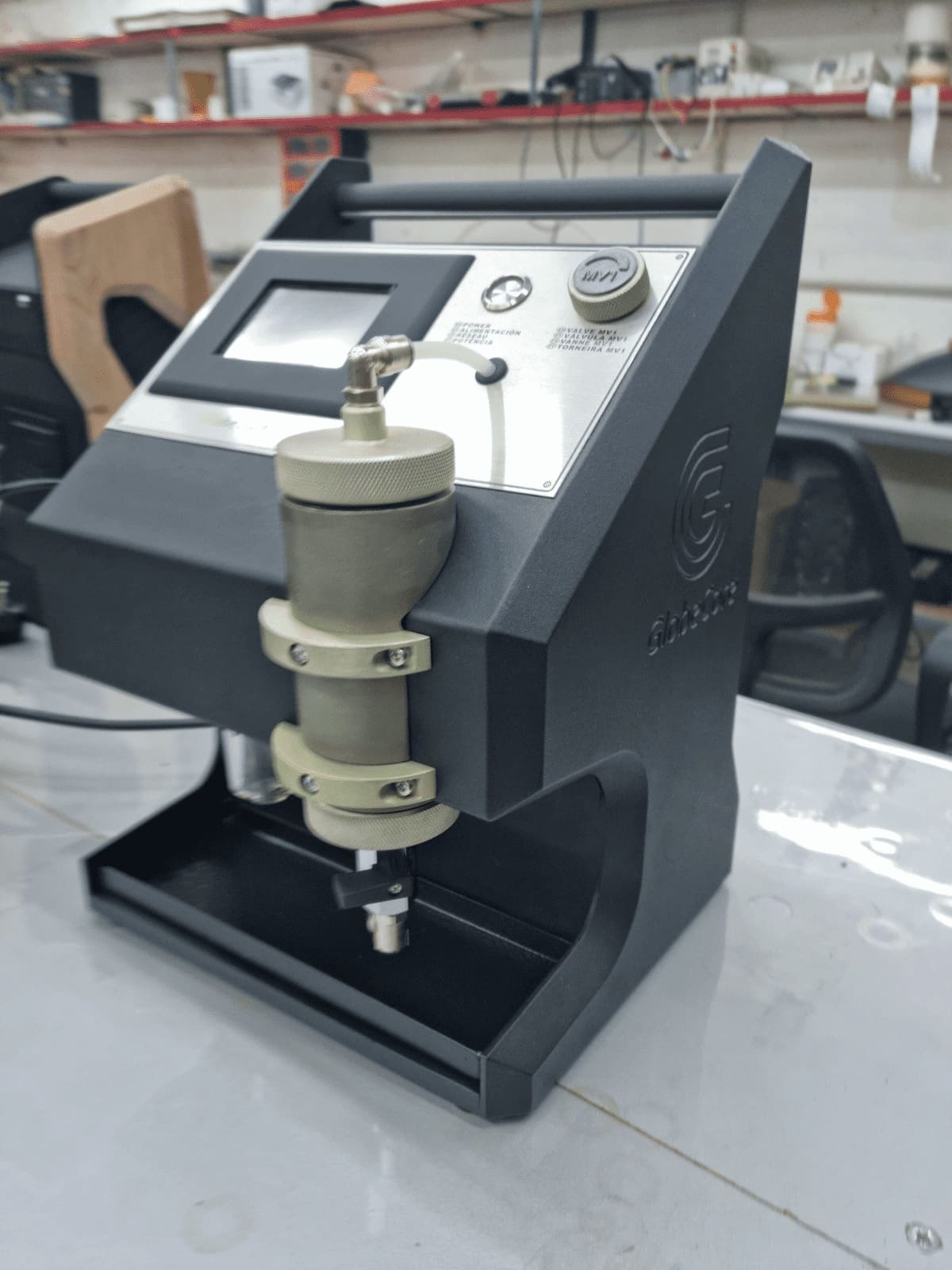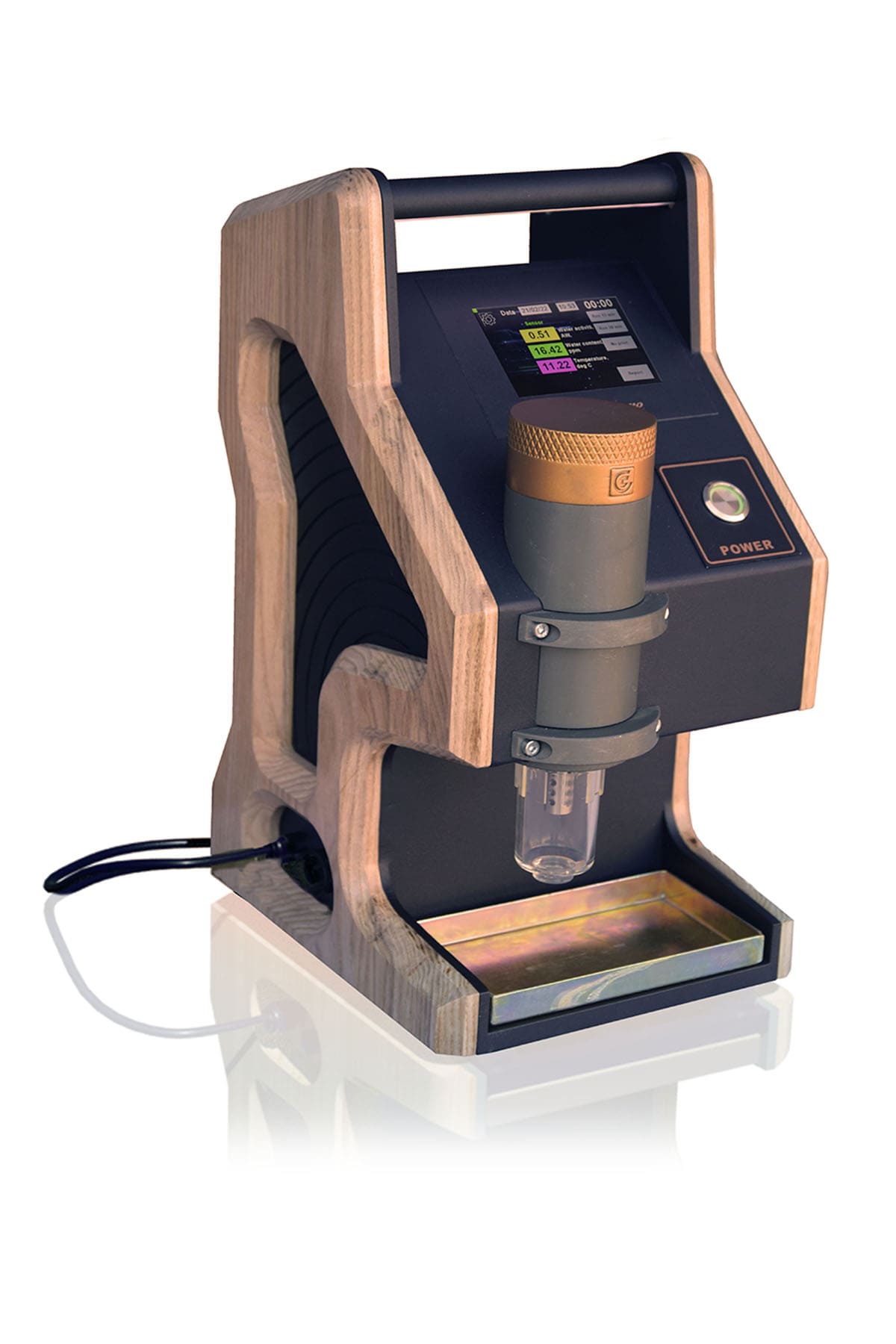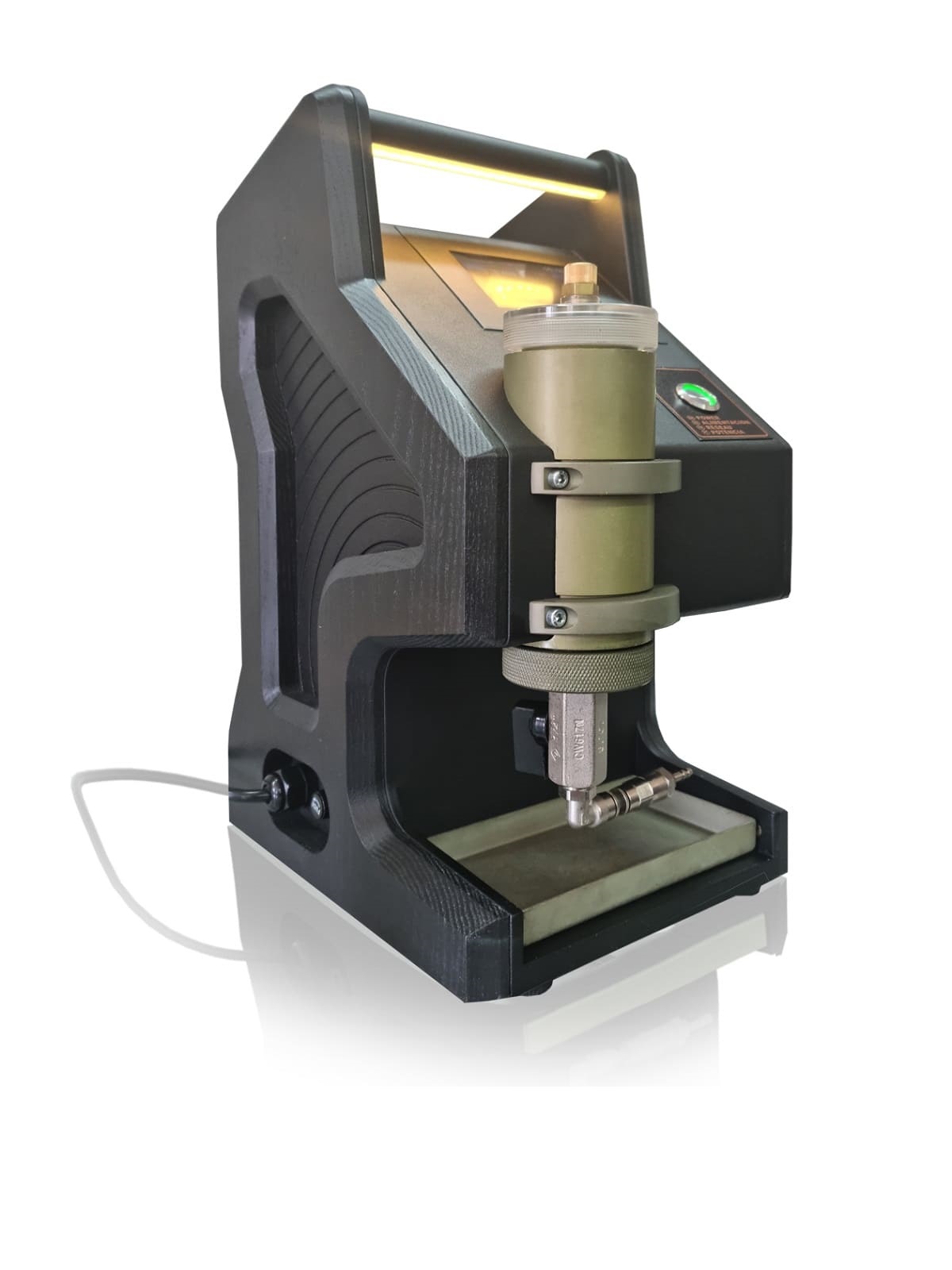Dissolved Gas Analysis Test (DGA) is a commonly employed method for evaluating the health of transformer oil. This approach detects and measures the amount of dissolved gases in the oil to assess the transformer’s overall condition. The existence of certain gases reflects the degree of wear and indicates possible problems within the transformer. This article delves into the significance of dissolved gas analysis tests, the key gases that reveal the state of transformer oil, the methodologies utilized for analyzing the gases in transformer oil, established values for dissolved gases in transformer oil, equipment used for gas analysis in transformer oil, and specifically, the TOR-2 GlobeCore device for assessing dissolved gas in transformer oil.
Effect of Presence of Dissolved Gas Analysis on Transformer Oil and Transformer
The insulating fluid in transformers, commonly known as transformer oil, serves the dual purposes of insulation and temperature regulation. This oil is prone to degradation resulting from elevated temperatures, oxidation, humidity, and electrical events. As the oil degrades, it emits gases that become dissolved within it. The existence of these gases can trigger further oil deterioration and negatively impact the transformer’s performance and dependability. Conducting a dissolved gas analysis on transformer oil allows for the detection of these gases and their concentrations, which aids in determining the oil’s level of degradation and potential transformer issues.
A variety of factors influence the extent of transformer oil degradation, including the oil type, operational conditions, and maintenance procedures. High temperatures, which may stem from overloading or insufficient cooling, can hasten oil degradation. Additionally, oxidation – the interaction between oil and oxygen – can contribute to oil deterioration. Humidity, which can infiltrate the transformer through leaks or inadequate sealing, may react with the oil and result in degradation. Electrical occurrences, such as arcing, can also cause degradation by generating gases that dissolve in the oil.
“Key” Gases that Carry Information about the Condition of the Transformer Oil
Diverse gases emerge from various degradation processes. Key gases observed during dissolved gas analysis tests encompass hydrogen (H2), methane (CH4), ethylene (C2H4), ethane (C2H6), acetylene (C2H2), carbon monoxide (CO), carbon dioxide (CO2), and oxygen (O2). Each gas holds distinct significance, signifying specific degradation forms. Hydrogen is the most vital gas, serving as a trustworthy indicator of transformer malfunctions. An excess of hydrogen denotes a transformer problem, as it originates from the thermal and electrical disintegration of insulation materials within the transformer. Methane is produced by the microbial decomposition of cellulose insulation material in the transformer, and its existence in considerable amounts infers cellulose material deterioration.
Ethylene forms from the thermal and electrical disintegration of transformer insulation materials, suggesting progressive insulation system degradation. Likewise, ethane arises from the breakdown of insulation materials and implies ongoing insulation system decline. Acetylene, also generated by the disintegration of insulation materials, conveys persistent and serious insulation system degradation when detected in elevated amounts, possibly alluding to a transformer malfunction.
Carbon monoxide develops due to the disintegration of transformer insulation materials, and its existence in considerable amounts emphasizes ongoing insulation system decline. Carbon dioxide stems from oil oxidation in the transformer, and its presence in significant amounts indicates oil degradation resulting from oxidation. Oxygen is created when oil contacts the atmosphere, signifying oil exposure to air or a leakage in the system.
By tracking these gases and their levels in transformer oil, it becomes feasible to recognize the degradation form and potential transformer malfunctions. This data is crucial for establishing maintenance timetables and identifying necessary measures to ensure the transformer’s dependability and extended lifespan.
How the Dissolved Gas Analysis of Transformer Oil is Performed
Numerous techniques, including gas chromatography (GC), Fourier transform infrared spectroscopy (FTIR), and photoacoustic spectroscopy (PAS), are applied to investigate gases dissolved in transformer oil. GC is the most prevalent technique, distinguishing and quantifying individual gases. FTIR detects gases by examining the oil’s absorption spectrum, while PAS measures the sound intensity produced by the absorption of infrared radiation by the dissolved gases.
Gas chromatography (GC) is the principal method for dissolved gas analysis in transformer oil. This approach separates individual gases in the oil, and their concentrations are determined using a thermal conductivity detector (TCD) or a flame ionization detector (FID). Each gas concentration is presented as a percentage of the total dissolved gas.
Fourier transform infrared spectroscopy (FTIR) is another frequently utilized method that identifies gas presence by studying the oil’s absorption spectrum. The oil sample is inspected in the mid-infrared region, and absorption spectra are analyzed to pinpoint specific gases within the oil.
Photoacoustic spectroscopy (PAS) is a newer technique that evaluates the sound intensity generated when infrared radiation is absorbed by dissolved gases in the oil. The oil sample is subjected to infrared radiation, and the sound produced due to the absorption is measured. The sound intensity is proportional to the dissolved gas concentration in the oil.
Irrespective of the chosen technique, analyzing dissolved gases in transformer oil necessitates a representative oil sample. Typically, the oil sample is collected from the transformer’s oil-filled system using a sampling valve. The sample is then sealed in a container and dispatched to a laboratory for analysis. This lab analysis yields crucial information about the transformer’s status, with results employed to detect potential issues and arrange maintenance activities.
Besides lab analysis, portable instruments are available for on-site dissolved gas analysis of transformer oil. These devices utilize various methods, such as photoacoustic spectroscopy and gas chromatography, to deliver instant results in the field. Portable instruments are especially valuable for monitoring transformers in distant areas and for rapidly evaluating the transformer’s condition during maintenance procedures.
Dissolved Gas Analysis of Transformer Oil Limits– Standardized Values
The outcomes of dissolved gas analysis tests are typically assessed against well-established criteria to evaluate the transformer’s health. Prevalent standards, such as IEEE C57.104 and IEC 60599, offer guidance for individual gases and gas ratios. These guidelines differ based on the transformer type and voltage class.
The parameters for dissolved gas analysis in transformer oil, as delineated by these standards, are derived from extensive research and investigation of the connection between gas concentrations and transformer malfunctions. By employing these guidelines, potential issues can be detected, allowing for the execution of remedial measures before substantial harm occurs. Consequently, the test criteria for dissolved gas analysis of transformer oil serve as an essential tool in the proactive upkeep of transformers.
Dissolved Gas Analysis Equipment
Dissolved gas analysis test equipment is utilized to examine gases dissolved in transformer oil. The equipment consists of a gas extraction device, a gas measurement device, and a computer for data analysis. The gas extraction device retrieves the dissolved gases from the transformer oil, while the gas measurement device evaluates the quantity of each gas in the acquired sample. The computer analyzes the data and generates a report.
Choosing suitable dissolved gas analysis equipment hinges on several factors, such as the required sensitivity, the transformer type, and its location. Portable handheld devices are often employed for on-site examinations, while more comprehensive assessments use laboratory-grade systems.
Dissolved Gas Analysis Equipment – TOR-2 GlobeCore
The TOR-2 GlobeCore dissolved gas analyzer is a streamlined, portable instrument designed for DGA applications. It is crafted to evaluate moisture and hydrogen content in mineral insulating oils as well as ether-based insulating oils. Moisture and hydrogen content measurements are expressed in parts per million (ppm), enabling rapid analysis. The dissolved gas analyzer assesses water activity utilizing a capacitance sensor, ensuring long-term stability and contamination resistance. Oil temperature is also recorded, and moisture content is derived from these measurements. A highly selective solid-state sensor submerged directly in the oil is used to gauge hydrogen content, guaranteeing accurate and reliable direct measurements. Due to hydrogen’s low solubility in oil and high diffusion capacity, detecting it at low concentrations becomes easier, allowing for the early detection of potential problems within the transformer.
Advantages of the dissolved gas analyzer and its Benefits for Customers
The GlobeCore TOR-2 dissolved gas analyzer boasts several advantages over alternative dissolved gas analysis testing equipment:
- Its portable and compact nature enables straightforward transportation and utilization at the transformer site.
- The user-friendly design requires no specialized training for operation.
- Monitoring hydrogen content provides trustworthy information on initial damage that could lead to transformer failure.
- The reliability of measurements is maintained, even with the presence of other gases in the oil.
- The cost-effective nature of the analyzer makes it a viable choice for small and medium-sized enterprises.
In summary, dissolved gas analysis of transformer oil is a crucial method for evaluating the state of transformer oil and identifying potential faults within the transformer. Various techniques are employed to analyze gases dissolved in transformer oil, and the results are benchmarked against standardized values to assess the transformer’s condition. Dissolved gas analysis test instruments are utilized for analyzing gases dissolved in transformer oil, with the GlobeCore TOR-2 dissolved gas analyzer being a portable and compact device for DGA purposes. Ultimately, conducting dissolved gas analysis tests is vital for maintaining the dependability and lifespan of transformers, and the GlobeCore TOR-2 dissolved gas analyzer proves to be an efficient tool for carrying out DGA.



 TOR-3 (TOR-3 SL) ...
TOR-3 (TOR-3 SL) ... TOR-1 Oil Moisture ...
TOR-1 Oil Moisture ... TOR-2 Hydrogen and ...
TOR-2 Hydrogen and ...